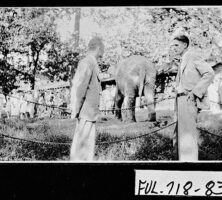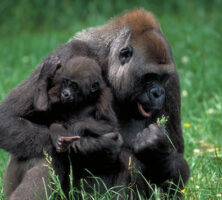Zoo Atlanta, in Atlanta’s historic Grant Park, began in 1886, when the city was given a spotted fawn to start an animal collection. In 1889 the zoo received its first donation of exotic animals when local businessman George V. Gress purchased a defunct circus and gave the animals to the city’s small collection. Gress’s generosity set a tone for the future of Zoo Atlanta, as prominent Atlantans would come forward periodically to add to its collection, rescue it from dire financial straits, and modernize it. Their efforts helped to establish the zoo as one of the top ten in the world.
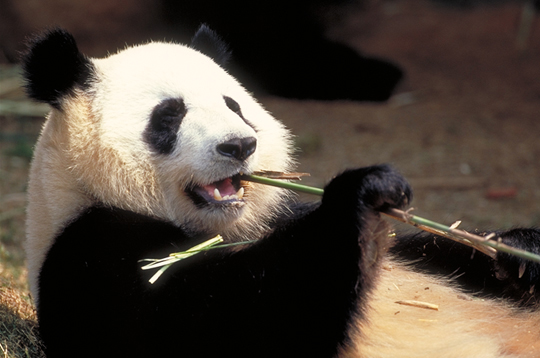
The animals from the circus included four lions, a hyena, and several monkeys, among other animals. During the 1890s, Gress continued to tour other zoos across America looking for new animals and new ideas. In its early years, the zoo was a menagerie designed to provide entertaining curiosities in cages. With its lake, boathouse, trails, historic fort, and zoo, Grant Park was called the “most ambitious city play-ground in the South” in 1895 by Harper’s New Monthly Magazine. Still, despite the popularity of the zoo, some city councilmen wondered whether it was worth the expense, and if not for persuasive arguments on the part of Gress and his allies, the zoo might have closed as the twentieth century began.
Atlanta’s newspapers often sponsored fund-raising drives to bring new animals to the collection. In 1935 they worked to raise money for zoo expansion and improvement in order to accommodate animals from the private zoo of Asa Candler Jr., the son of Coca-Cola founder Asa Candler. Candler’s zoo was located at his home on the corner of Briarcliff and University roads in Atlanta’s Druid Hills neighborhood. While the drive did not raise enough money to transfer all of his animals to the city zoo, improvements to the original animal buildings and lots were made to house the new arrivals, which included leopards, a tiger, llamas, bears, a baboon, and a number of monkeys.
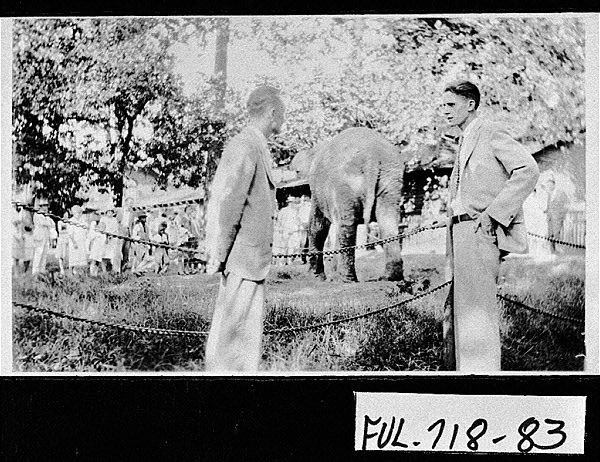
The zoo’s most famous resident, lowland gorilla Willie B., arrived in 1959. Named after Atlanta mayor William B. Hartsfield, the gorilla was quite popular among zoo visitors until an illness cut his life short. The second Willie B. continued to draw crowds, and the primate house became the site for a science room in which children could learn about the scientific study of zoo animals.
Science, research, and conservation were incorporated into the new direction of the zoo during the 1960s. The city parks directors started hiring animal professionals who both conducted research and cared for the animals. In 1967 the zoo hired its first professional zoo director, John Roth, who had studied under world-renowned zoological scholars. While previous directors Matt Leonard and Johnny Dilbeck were committed zookeepers who loved the animals and worked well with the public, Roth was committed to bringing new trends in zoology to Atlanta’s zoo. His plans included bringing pairs of rare and endangered animals to the zoo for protection and survival, and he also established a connection with the Yerkes National Primate Center at Emory University by bringing great apes to the zoo.
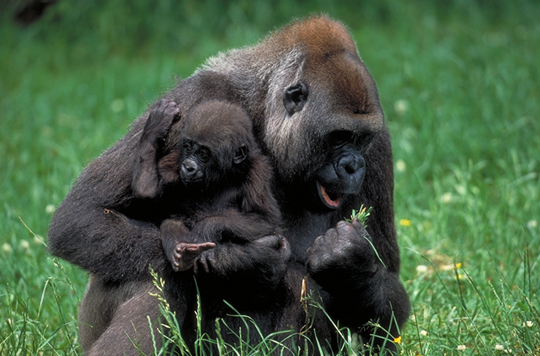
While Roth continued to make improvements, many city officials wondered whether taxpayers could afford the zoo’s expense. Roth resigned in 1970, and his successor, J. S. “Steve” Dobbs, was faced with managing an aging zoo. Dobbs’s years as zoo director were marred by controversy, including mysterious circumstances surrounding the deaths of several animals. By 1984 Parade Magazine had deemed the Atlanta Zoo one of the ten worst in the nation.
The controversy mobilized both the zoo’s support base and Atlanta city leaders to create a crisis team that would implement changes. A new director, Terry Maple, a research scientist at the Georgia Institute of Technology and former board member of the Atlanta Zoological Society, was hired. Atlanta–Fulton County Zoo Inc., a new public-private partnership, was formed to generate funding and run the zoo, which in 1985 officially became known as Zoo Atlanta. Within a few years, the zoo had raised money, increased visitors and memberships, and found corporate donors. Most importantly, the zoo opened new outdoor habitats for the animals, allowing Willie B. to step outside for the first time since 1961. Under Maple’s leadership, the zoo continued to improve and became arguably one of the best small zoos in the country. The arrival of pandas in 1999 cemented Zoo Atlanta’s reputation as a premier zoological collection focused on education, research, and conservation. Dennis W. Kelly has been Zoo Atlanta’s president and chief executive officer since 2003.
In September 2006 two giant pandas, female Lun Lun and male Yang Yang, on loan to Zoo Atlanta from the Chengdu Research Base of Giant Panda Breeding in China, produced a female cub. Giant pandas are endangered in their native China, and the birth, resulting from artificial insemination, garnered significant local and international attention. During a traditional Chinese ceremony held 100 day safter her birth, the cub was named Mei Lan, meaning “Atlanta Beauty.”
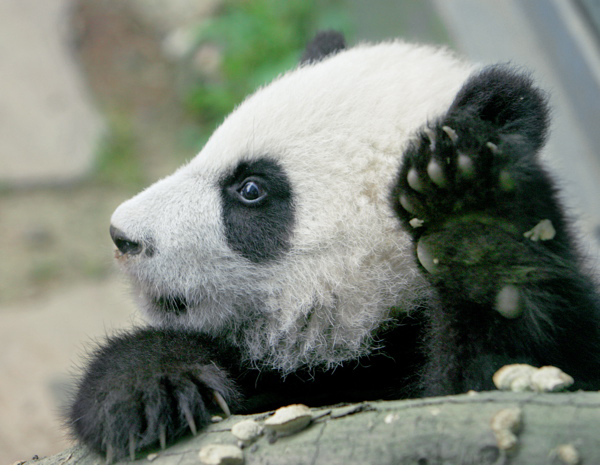
Zoo Atlanta has an annual attendance of more than 500,000, and 40,000 households have family memberships. The zoo encourages corporate sponsorship with its Zoo Atlanta Days and special events featuring live music, storytellers, and raffles. The zoo’s education department offers tours, overnight summer-camp programs, and the ZooMobile, which makes visits to schools.







